Recommended locations for Autumn Leaf Viewing in Nara Prefecture
2022/11/08
Mitarai Keikoku Canyon, Tenkawa Village
Tenkawa Village is famous for its outdoor recreation in all seasons, and fall certainly does not disappoint. Being located at a higher elevation in the southern mountains of Nara Prefecture, the leaves start to change color here a little earlier, usually around mid to late-October. The most well-known fall leaf-viewing area in Tenkawa is Mitarai Keikoku, a beautiful canyon through which the pure waters of the Yamagami river flow and crash down a landscape of huge, moss-covered boulders. In the fall, the sides of this canyon burst into beautiful shades of orange, yellow and red, making it a wonderful location for a day hike.
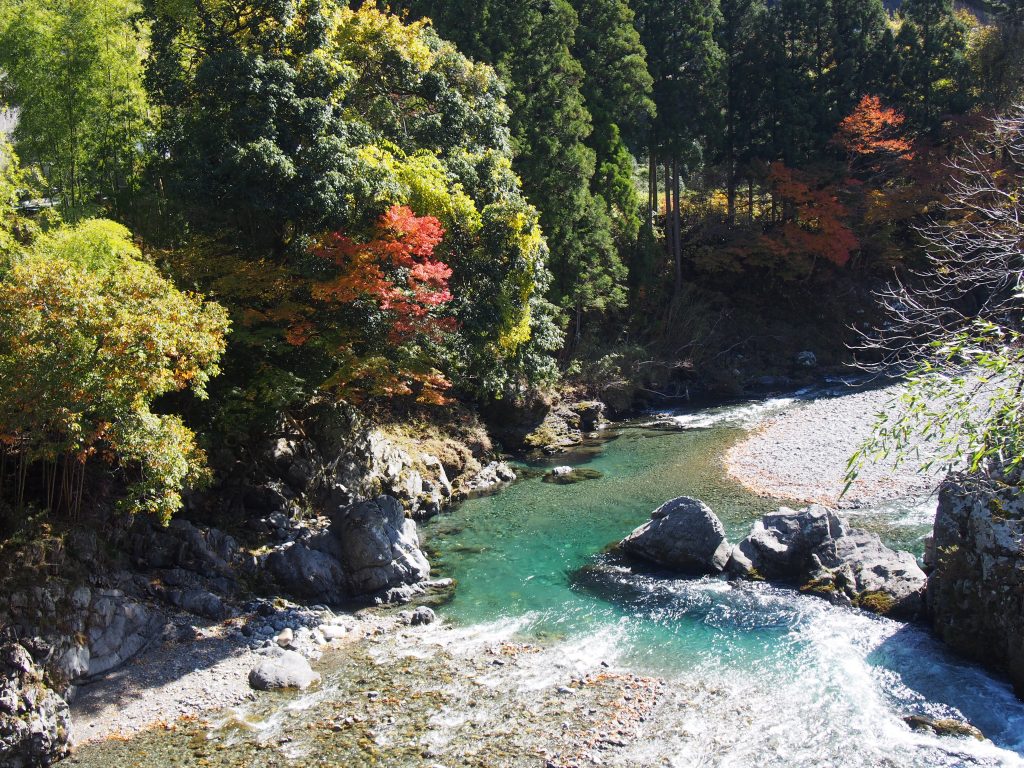
The full Mitarai hike, from Tenkawa Kawai Bus Stop to the Dorogawa Onsen Bus Stop, is about 7.5 KM in distance, though the narrow canyon section that the route is known for is only about 1.3 KM, between Shirakura-bashi Bridge, and the Kannon-mine Trailhead Rest Area.
After your hike, you can enjoy a dip in the famous hot spring waters of Tenkawa Village at the Dorogawa Onsen facility, which is located near the southern entrance of the hike, above Mitarai Canyon (in the Dorogawa area).
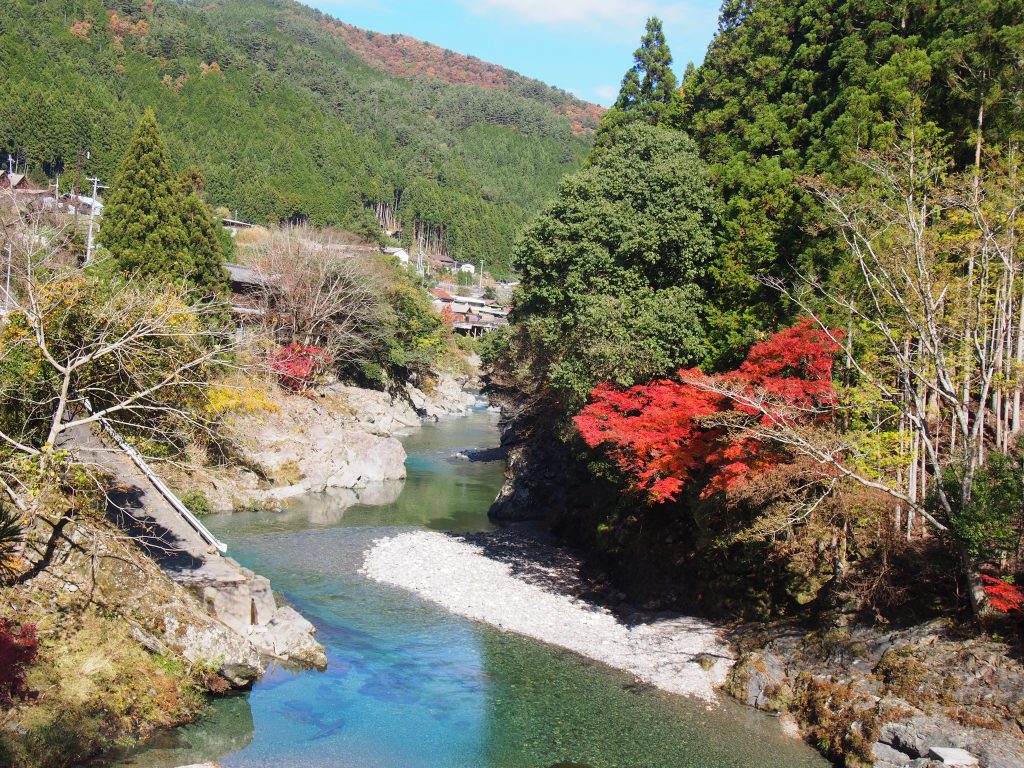
If you want to make a multi-day trip of visiting this area, there are numerous ryokan (a Japanese traditional inn) in Dorogawa that also offer their own private hot springs and serve delicious local cuisine. From the Dorogawa area there are also numerous other hiking courses that you can access, leading to a variety of fascinating historical spots rooted in the Shugendo faith, as well as locations with beautiful natural scenery.
Nara Park, Nara City
Nara Park is probably the prefecture’s most famous attraction because of the friendly herds of sacred deer that roam through the area. There are a lot of great reasons to visit this special location in Nara, with the fall colors being just one of them.
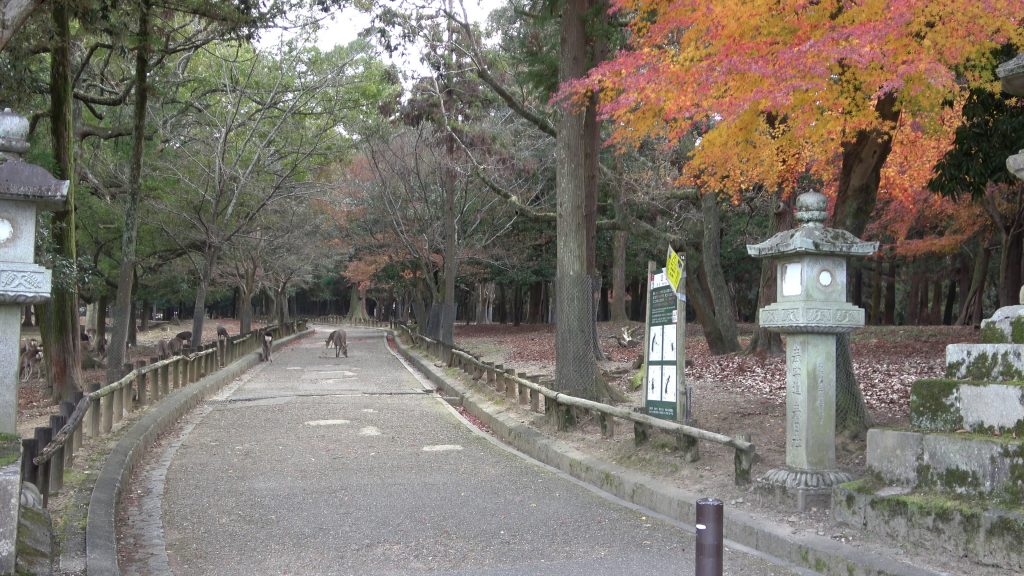
The park features many winding paths that weave through the forested landscape, leading to such locations as the picturesque Ukimi-do Pavilion of Sagi-ike Pond, which is known for amazing spring and fall scenery. Todai-ji Temple’s Nigatsu-do Hall, located on the cove of Mt. Wakakusayama, also comes highly recommended, as it offers fantastic sweeping views over the Nara Basin below
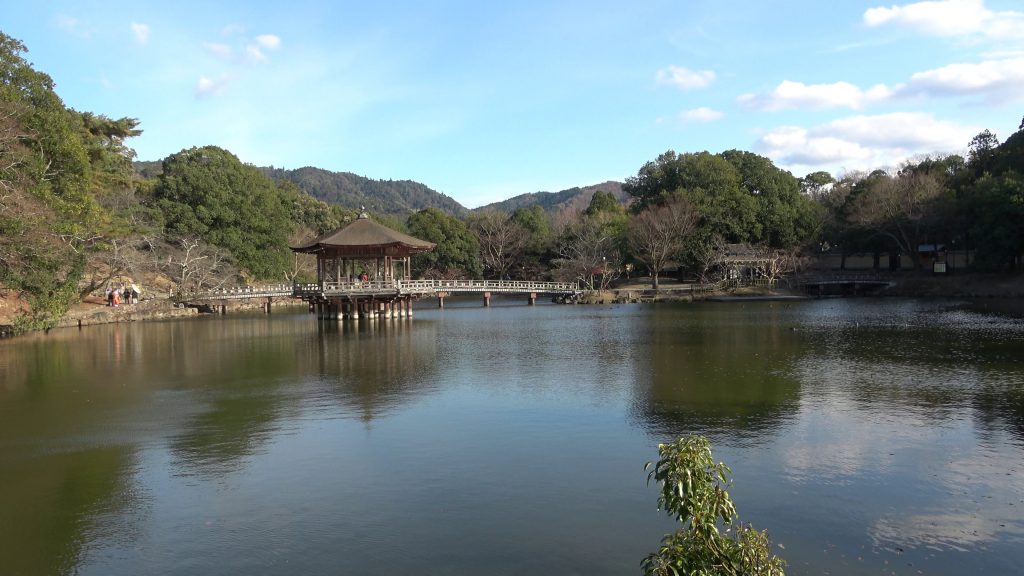
Ukimi-do Pavilion in Nara City
There is always something new to discover around the next bend in Nara park, and the changing fall colors only amplifies the beauty of the area’s historical sights and natural landscapes.
Hase-dera Temple, Sakurai City
Though commonly known as “the temple of flowers,” Hase-dera’s fall beauty is also something that is not to be missed. Located in a mountain valley east of Sakura City’s center, views from the Main Hall of the temple give a panorama of fall season in both the surrounding forests and temple grounds.
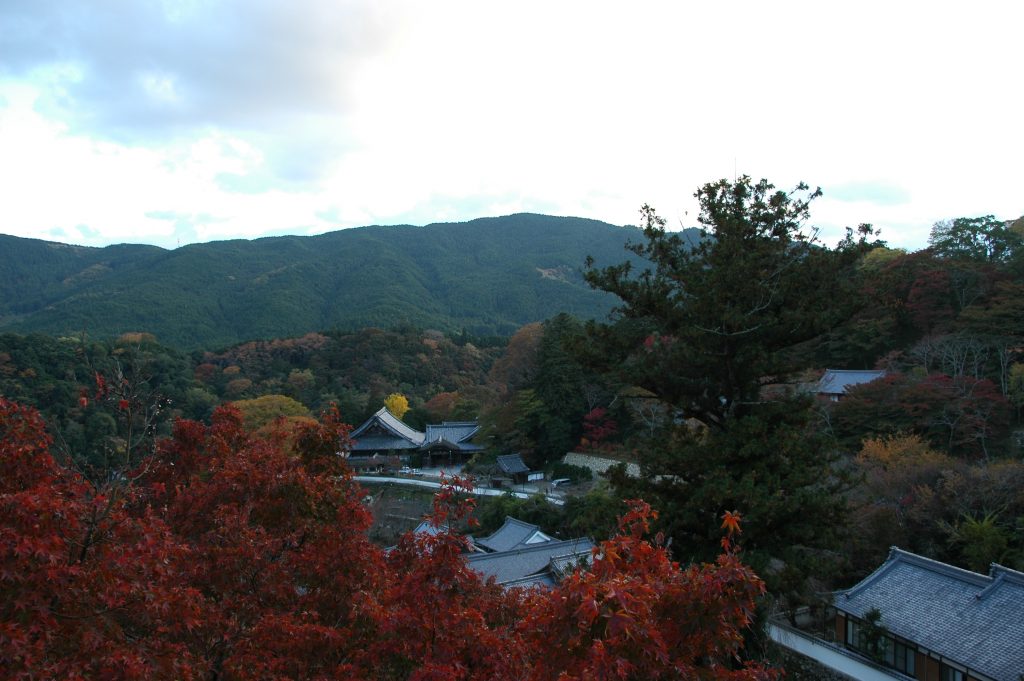
The types of fall views here are iconic of Japan; narrow winding paths, traditional wooden architecture, and dramatic mountains amidst spots of fiery vibrant color. Bring your best camera if you plan to visit Hase-dera in the fall because the scenery here is truly second to none.
Below the front gate of the Temple complex is an old merchant street where you can vide a wide variety of shops and restaurants so that you can buy some local souvenirs and grab a bite as part of your experience. A local traditional dish is the Miwa Somen (named after nearby Mt. Miwa), an especially thin type of noodle that is typically served in both cool and hot soups along with fresh veggies and other ingredients.
Yoshinoyama (Mt. Yoshino), Yoshino Town
Another great location for the avid outdoor enthusiast, Yoshinoyama is a gateway area of sorts to the rugged southern mountains of Nara Prefecture that still can be easily access by train. In fact, the beautiful koyo maple leaf colors will greet you here as soon as you get off the train and start walking along Nanamagari Road, the route which connects Yoshino Station to the temple district above.
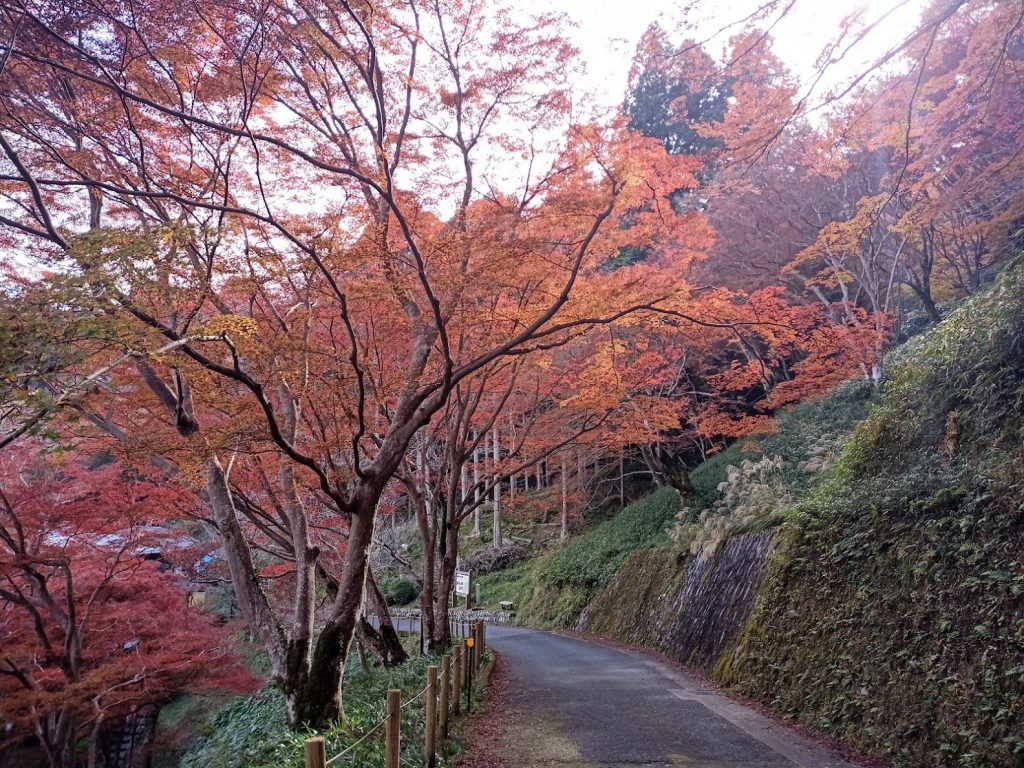
Fall colors on Nanamagari Road, located between Yoshino Station and Yoshinoyama’s main street.
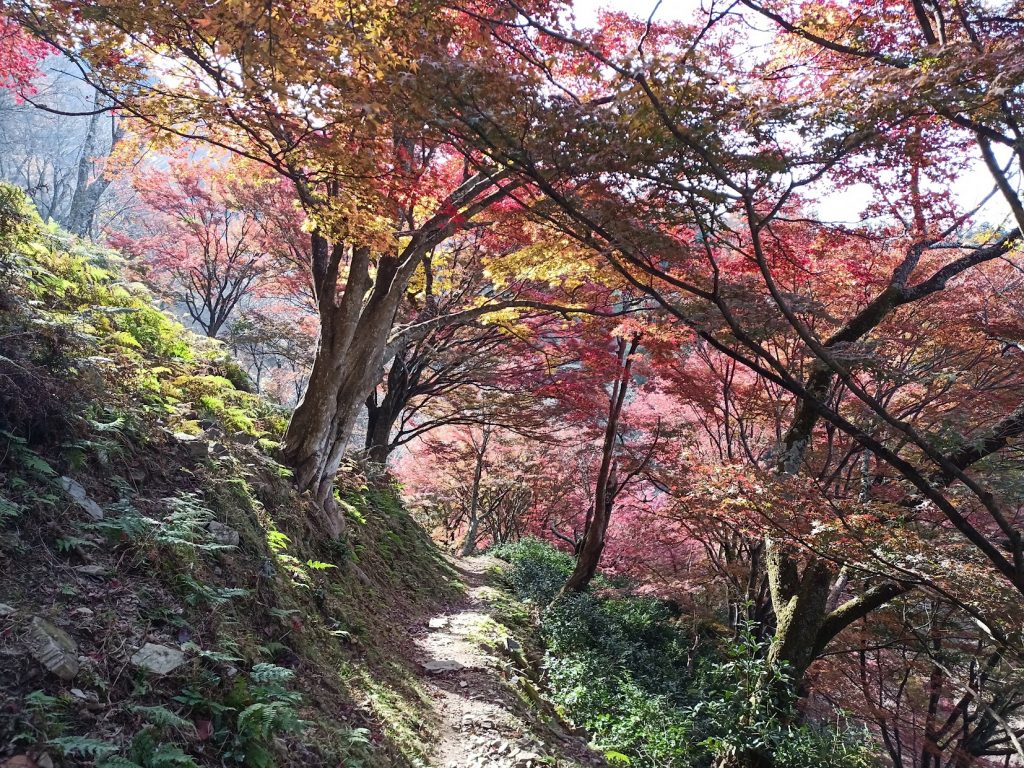
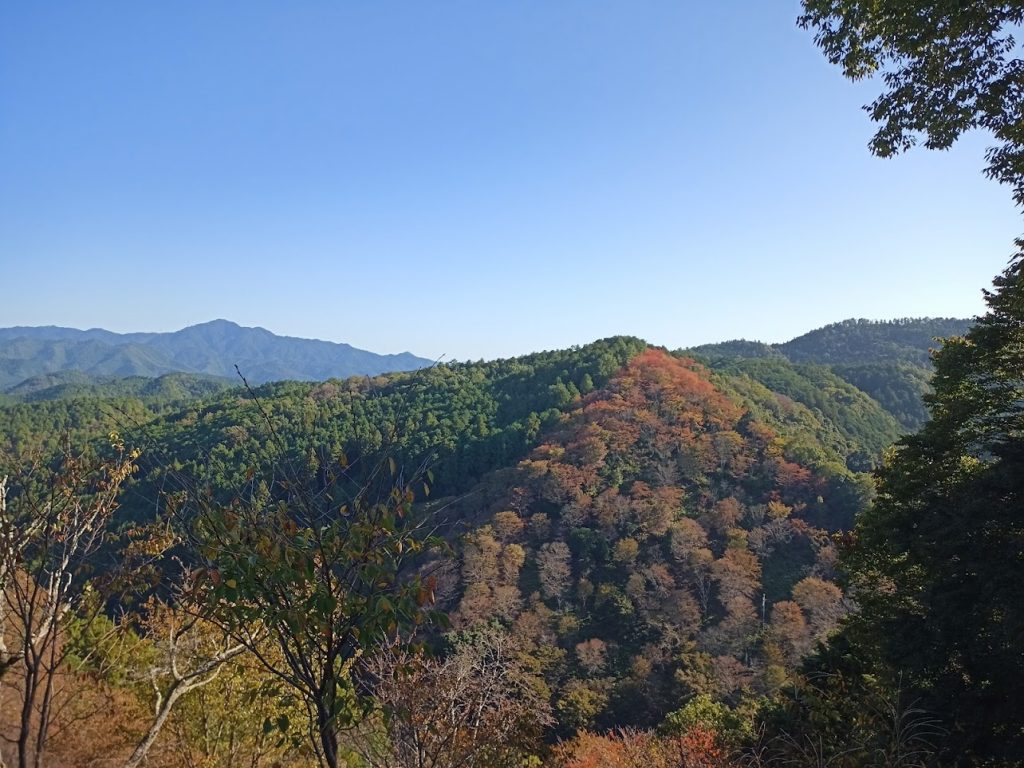
Looking over part of the Shimo-senbon cherry blossom grove.
Hiking up deeper into the district, you can observe the changing colors at various other spots, including the thousand tree cherry blossom groves that the area is most well known for, which can exabit lovely oranges and yellows on a good year. Takagiyama, a peak that was used as a fort during the Nanboku-cho Period (1336 – 1392 CE), is also famous for maple leaf koyo.
Finally, the highest elevation backcountry hiking loop to the Saigyo-an Hermitage grounds, where the Heian / Kamakura Period poet Saigyo spent years in solitude, is another fantastic fall-colors location. From the hermitage grounds one can look over the mountain landscape of pine forest and observe the beauty of the sakura blossoms in the spring and the colors of autumn in late October through November.
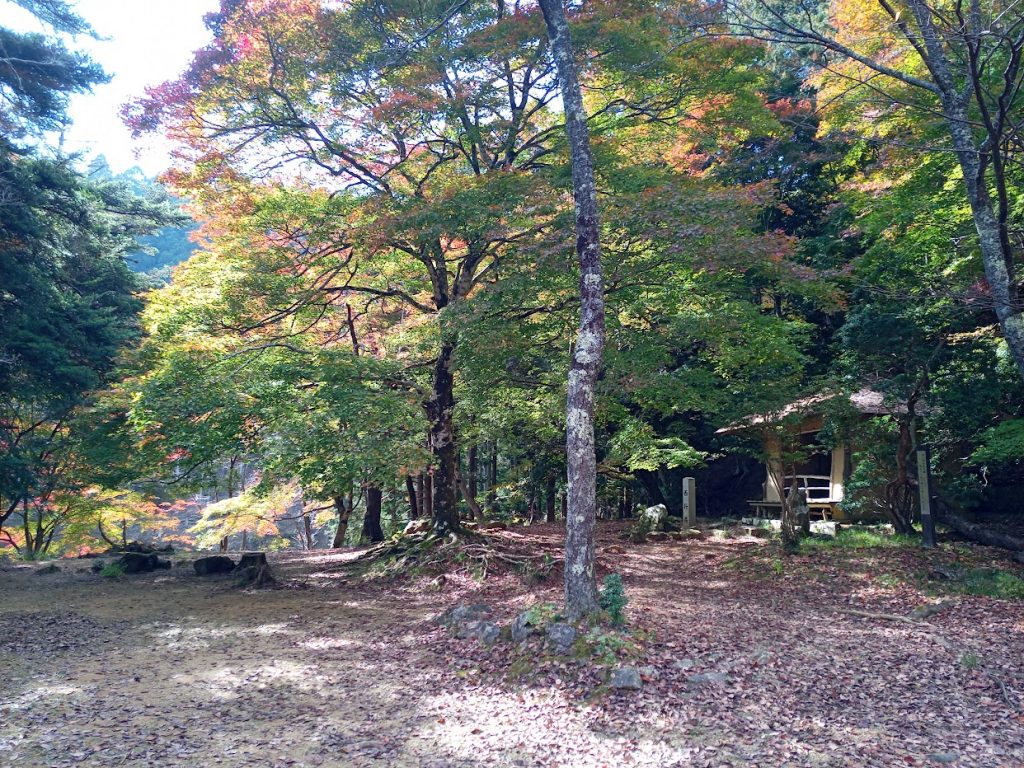
Saigyo-an Hermitage in early November.
For those looking for a challenge, you can explore from the top of Yoshinoyama deeper into the backcountry along the Omine-Okugake Pilgrimage Path for as long as you wish, though be aware that this is a very rugged route that is not suitable casual hiking.
Shigisan (Mt. Shigi), Sango Town
Lying on the border of Nara and Osaka, Mt. Shigi is home to temple complex whose history is connected the successful establishment of Buddhism in Japanese society; it was founded as a gesture of thanks to the divine by Prince Shotoku after the pro-Buddhist Soga Clan army defeated the pro-Shinto forces of the Mononobe Clan in battle.
The temple complex, called Chogosonshi-ji, is tucked away inside of a narrow mountain valley below the peak, where a castle once stood. In the fall, several types of trees exhibit beautiful colors that compliment the traditional architecture, including ginko and maple.
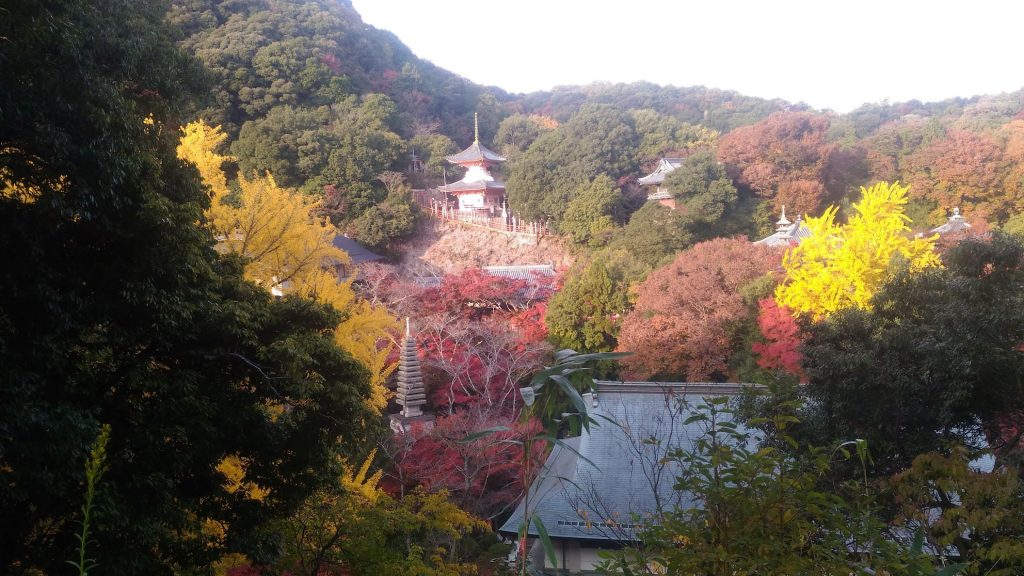
Chogosonshi-ji Temple complex in the fall.
The temple complex is a bit harder to reach directly without using a bus then the rest of the list, but the hike to the top from Shigisanshita Station at the base of the mountain is quiet nice for those willing to make the trek.
The suggested list above is only the tip of the iceberg when it comes to the scenic fall beauty that Nara Prefecture has to offer. Feel free to contact us here at Kansai Treasure Travel anytime for more travel advice or a custom tour.

01
FIND YOUR FAVORITE
TRIP ON OUR WEBSITE.
SEND US AN INQUIRY.

02
PERSONALIZE THE TRIP
TO YOUR INTERESTS
WITH OUR CONSULTANT.

03
20% DEPOSIT TO CONFIRM.
BALANCE PRIOR TO ARRIVAL.
PAYMENT BY CC OR TT.

04
WE WILL
MEET YOU
AT THE AIRPORT.

05
DISCOVER THE
TREASURES!